To understand cost control, you must first understand why it is used: monitoring expenses and identifying risks to increase profits. Not to be confused with cost management, cost control has its own set of objectives that can save businesses money.
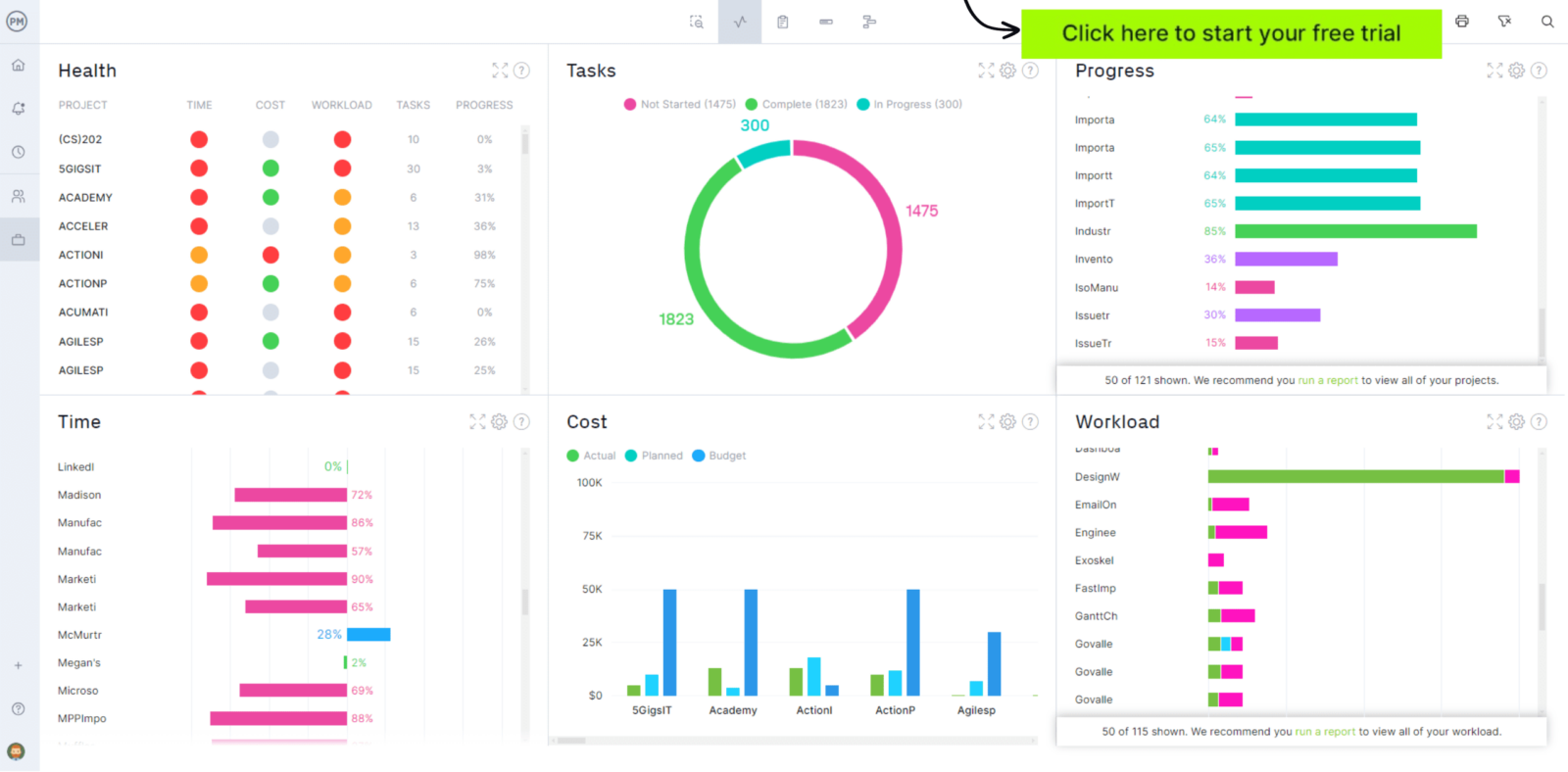
What Is Cost Control?
Cost control is the process of estimating, budgeting, tracking and reporting on project or business costs in order to keep costs within budgets to ensure profitability and maximize financial benefits. To make accurate project or business budgets, all expenses must be monitored, and spending controlled, to accommodate for any changes.
Predicting risks is another key factor in cost control. When you accurately analyze risks before they happen, you can modify the project budget before any issue occurs. This decreases the likelihood of exceeding the budget. For example, construction projects are especially prone to going over budget, affecting their profitability or even risking their completion or timely delivery, but proper cost control prevents this from happening and provides information to make future predictions.
Project cost control begins with monitoring and tracking changes to expenses. These changes are called variations, and they can be either “favorable” or “unfavorable.” These variations can be used to make more accurate predictions in the future.
Cost Control Process
We’ve broken down the steps for cost control in business and project management.
1. Cost Estimation
The goal of cost estimation is to estimate the costs related to the project or business activity. Achieve this by identifying the potential costs, including direct costs like labor and materials in addition to indirect costs like overhead and administrative costs. You can use cost estimating techniques in addition to historical data to inform cost estimation.
2. Budgeting
In the budgeting step, develop a cost baseline that will act as the approved budget. The baseline will be used as a comparison against the actual project costs that come to fruition. To accomplish this, use various budgeting methods such as fixed, flexible or zero-based to allocate estimated costs to various project phases, activities or components. Financial project management software can also be used.
3. Cost Tracking and Variance Analysis
Cost tracking is a critical part of cost control as it helps project management or business management teams diagnose any cost variances that can affect their budget. These changes are called variations, and they can be either “favorable” or “unfavorable.” These variations can be used to make more accurate predictions in the future. The most commonly used metrics to monitor costs are cost variance, budget variance and cost performance index.
4. Corrective Actions
Corrective actions consist of the steps needed to bring the costs on track if there are any identified deviations such as a needed cost reduction. It relies on the change control process and forecasting to implement changes; these may include negotiating with various suppliers, adjusting project timelines or adjusting resource allocations.
5. Cost Performance Reporting
Cost performance reporting is an integral step to ensuring all stakeholders are informed of cost performance. Reporting and overall communication can offer regular reports on cost status while highlighting variances and actions taken. It’s important to use financial reports, dashboards and project updates to communicate both good and bad news to help avoid surprises.
6. Cost Closeout
During the cost closeout phase, ensure that all costs are finalized and the budget is reconciled. Here, you’ll want to review all expenditures, make any outstanding payments and ensure that invoices and contracts are closed. Use various tools such as financial auditing and final project reports to oversee this data. When everything is finalized, perform a post-project cost analysis so this data can be used to inform future projects.
Cost Control Methods and Techniques for Project and Business Management
Below are some various cost control methods and techniques that will benefit individual projects and businesses as a whole.
Cost-Benefit Analysis (CBA)
A CBA helps determine if a project or individual activity is worth pursuing based on the predicted return on investment. It accomplishes this by comparing the benefits of a decision or investment against the costs it will take to accomplish it. A cost-benefit analysis is used in both business and project management to help determine financial viability.
Activity-Based Costing
In activity-based costing (ABC), overhead and indirect costs are allocated to specific activities based on the volume of resources they consume. ABC helps paint a more accurate picture of where various costs are coming from by tying them to specific activities. This method is commonly used in business management to improve the accuracy of costing and to help identify inefficiencies.
Cash Flow Management
Cash flow management helps monitor and optimize the flow of cash in and out of a project or business. It helps ensure there is enough liquidity to meet its obligations regarding operational or project costs. These insights into financial health help improve strategic planning and investment decisions and can avoid liquidity issues.
Value Engineering
Value engineering is a specific method to improve a project’s value by either reducing costs or enhancing function. Used in both project and business management, value engineering is especially useful in construction and product development. The goal of value engineering is to strike an ideal balance between cost, quality and performance.
Earned Value Management
Earned value management (EVM) is a combination of scope, schedule and cost measurements to determine how well a project is performing. It helps track progress and compares the actual costs to planned costs and earned value. Earned value refers to the value of the work that was actually completed. EVM is typically used in project management to better measure cost performance.
What Is Expense Control?
Expense control is the process of making direct changes to spending. Ideally, these changes are informed by cost control data. Where cost control focuses on both the big picture and the smaller details, expense control makes immediate changes to spending habits in order to keep projects on track.
To track and control expenses, they must be identified and sorted into one of two categories: direct expenses and indirect expenses.
Direct Expenses
Direct expenses go directly toward a project’s tangible needs. Three of the most common examples of direct expense are materials, labor and equipment. These expenses will be specific to the project and “create” something tangible. Our free estimate template can help you predict and manage your direct expenses.
Indirect Expenses
Indirect expenses are costs that are constantly accumulating in the background. A few common examples of indirect expenses are employee salaries, employee benefits and office/facility rental. Controlling indirect expenses can be the difference between project success and project failure.

Get your free
Project Dashboard Template
Use this free Project Dashboard Template for Excel to manage your projects better.
Seven Tips for Better Cost Control
All projects have risks and, more likely than not, experience changes. That doesn’t mean they have to go over budget. These best practices for cost control set your process up for success:
1. Define Important KPIs
For each task or process, a project manager should decide on key performance indicators. These KPIs are predetermined metrics a team establishes before beginning a project, and are referred to throughout the project to check progress.
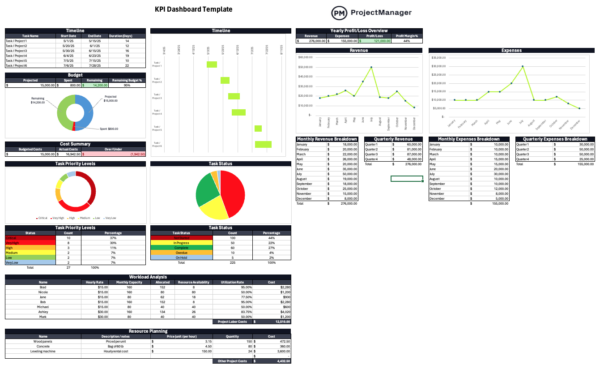
2. Anticipate Inflation
The cost of goods and services fluctuates depending on market factors. This can result in increased expenses. These price changes necessitate adjustments to budgets and spending. In terms of cost control, you must take these changes into account when preparing for risks and variances.
3. Create Contingency Plans
No matter how well a project is planned, there is still a chance something will go awry. You need to anticipate these financial risks and create strategies for adapting to them without incurring unfavorable variances. Think of these contingencies as backup plans. The more you can imagine the unexpected, the more prepared you are for the worst-case scenario.
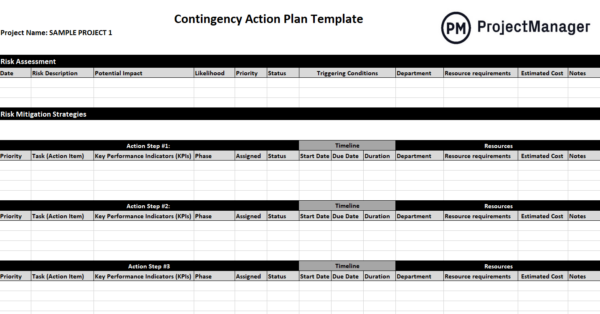
4. Track Expenses in Real Time
A crucial aspect of cost control is tracking and documenting expenses. This is the only way to spot variances and correct them going forward. When you track expenses in real-time, you can spot variances and make the appropriate changes. In this way, even unfavorable variances can inform how you control costs for the remainder of the project.
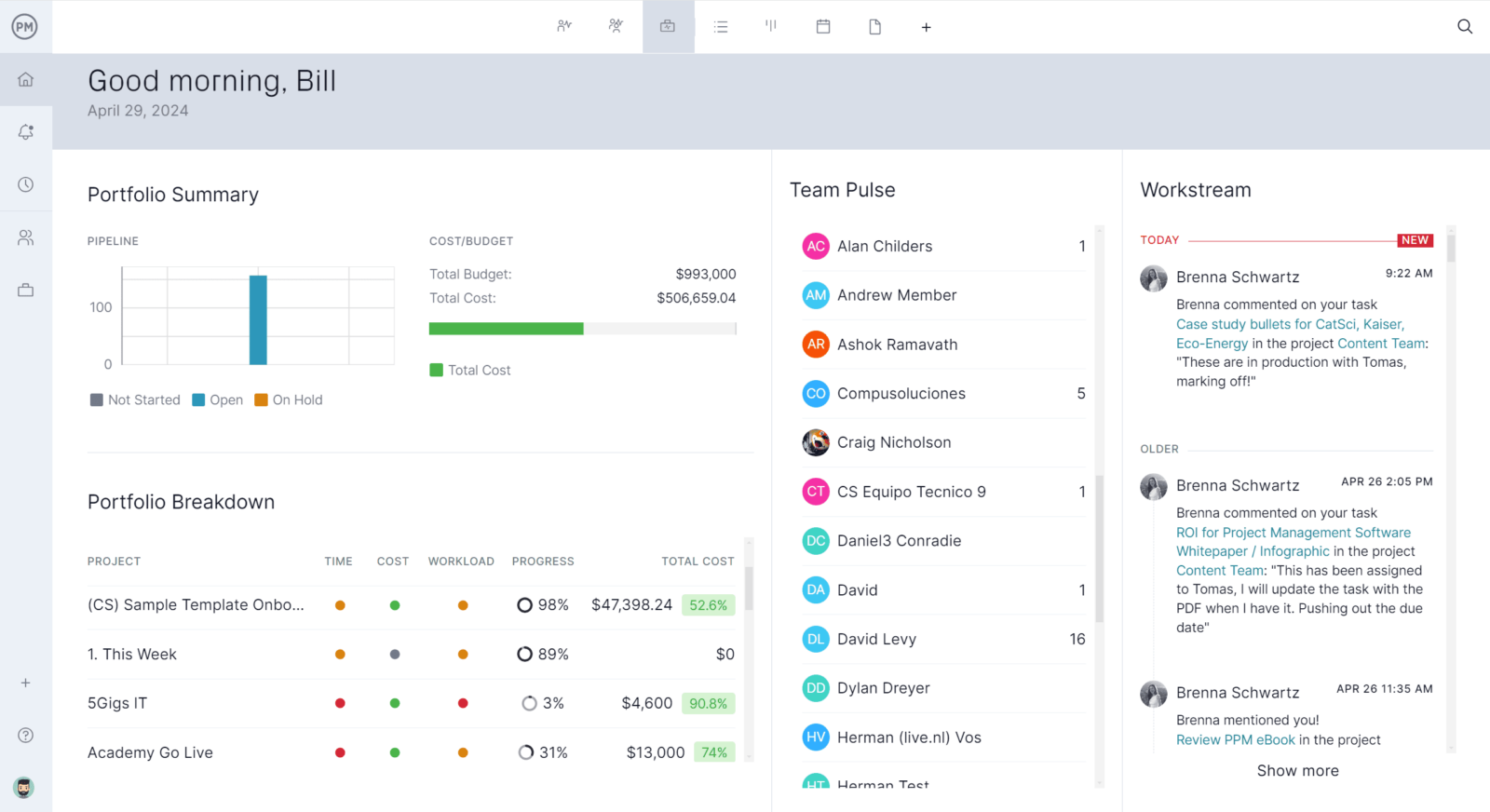
5. Collect Data Regularly
Consistency is the name of the game. When the project appears to be running smoothly, collecting data can seem a low priority. But when we allow this to happen, the data becomes skewed and less useful going forward. After all, cost control should be about spotting favorable variances as much as it should unfavorable ones.
How often you collect data will differ depending on the size and scope of the project, but a schedule for doing the collection must be set—whether it be weekly, biweekly, monthly, etc.
6. Document all Variations
Even the smallest variations should be documented. They may seem insignificant at the time, but odds are they will come in handy later on. If hourly employees need a few hours of overtime to complete a task, this is an unexpected indirect expense. Little variations like these can seem like flukes, but they can be used to make more accurate budgets in the future.
7. Communicate with the Team
Cost control is not a one-man show. To create smarter budgets, you must convey variations and their causes to the entire team. This keeps everyone on the same page and aware of setbacks and successes. Never make the mistake of thinking data isn’t relevant to team members. Cost control is largely about collecting data, but if no one is using it the data becomes useless.
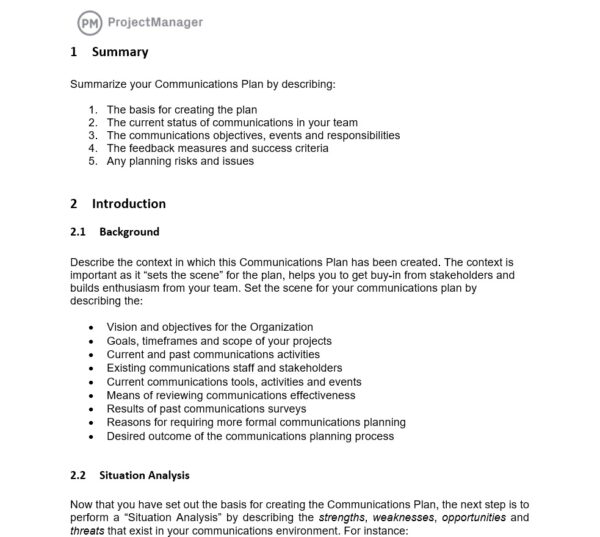
Project Dashboard Template
We’ve created a free project dashboard template for Excel to help you track tasks, workload allocation, due dates and costs. Simply enter your project data and monitor your project costs at a glance.
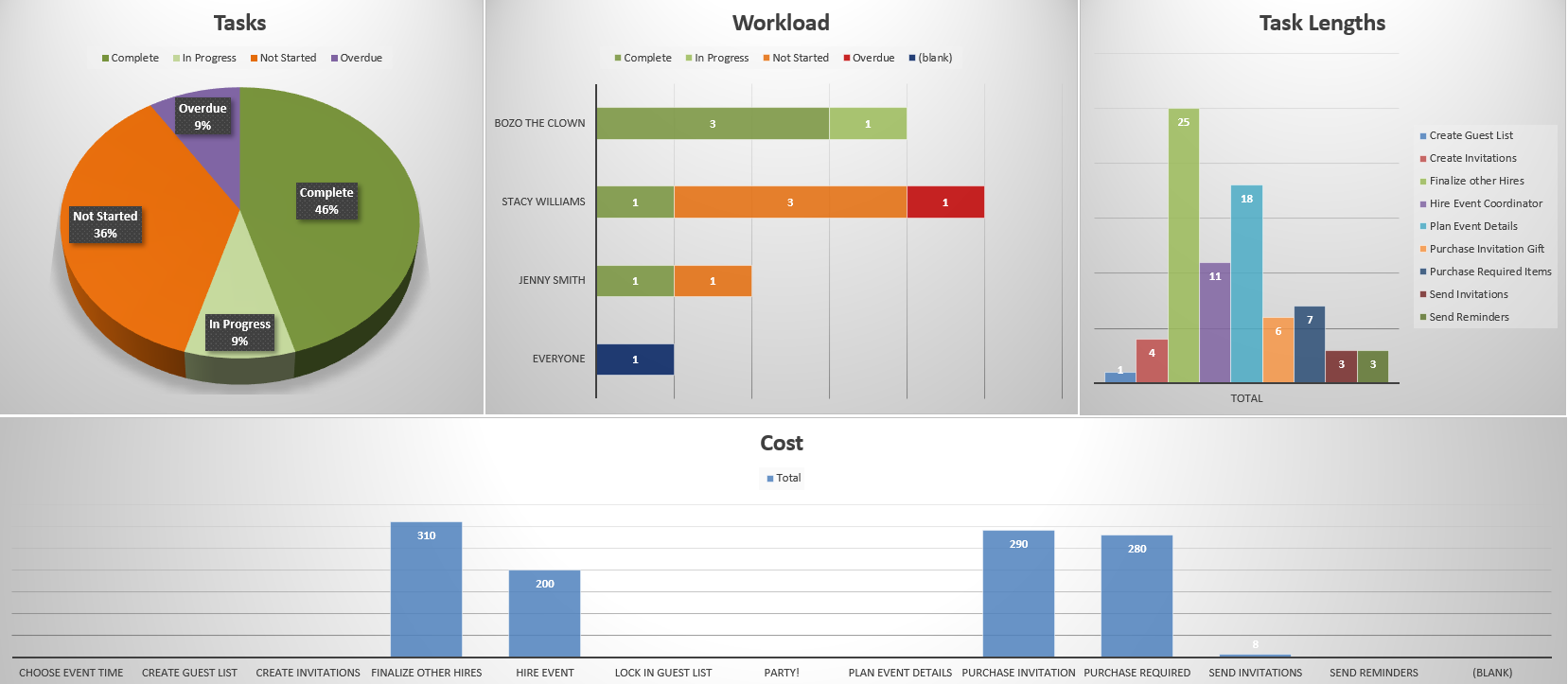
Things to Avoid When Controlling Costs and Expenses
Cost control is a nuanced process, but there are ways to make it a bit less tricky. Here are three common cost management mistakes even the best project managers make. Luckily, they are avoidable when you know what to watch out for:
Neglecting to Consider Indirect Expenses
Indirect expenses are overlooked often. These expenses lurk in the background of any project, but the costs add up. Additionally, when you don’t consistently track indirect expenses, you won’t notice costs like an increase in rent, employee benefits and other forms of inflation. In a perfect world, these expenses would be static, but not accounting for their constant changes can easily send you over budget.
Undervaluing Contractor and Supplier Relationships
A good relationship with a contractor or supplier can make controlling direct expenses much simpler. When you have a strong relationship with a supplier, they may be more likely to inform you of price increases ahead of time. Keeping these relationships healthy can make it easier to renegotiate contracts if need be.
Favorable variances may mean you can buy more supplies or contract more help. Unfavorable variances may mean you need to cut back. Either way, a good relationship makes the process painless.
Not Using Automated Tools
The secret to effective cost control is staying on top of expenses, risks and other factors that affect the budget. In order to do so, you must use tools to manage data, track expenses and resources, create reports and make adjustments to budget in real time.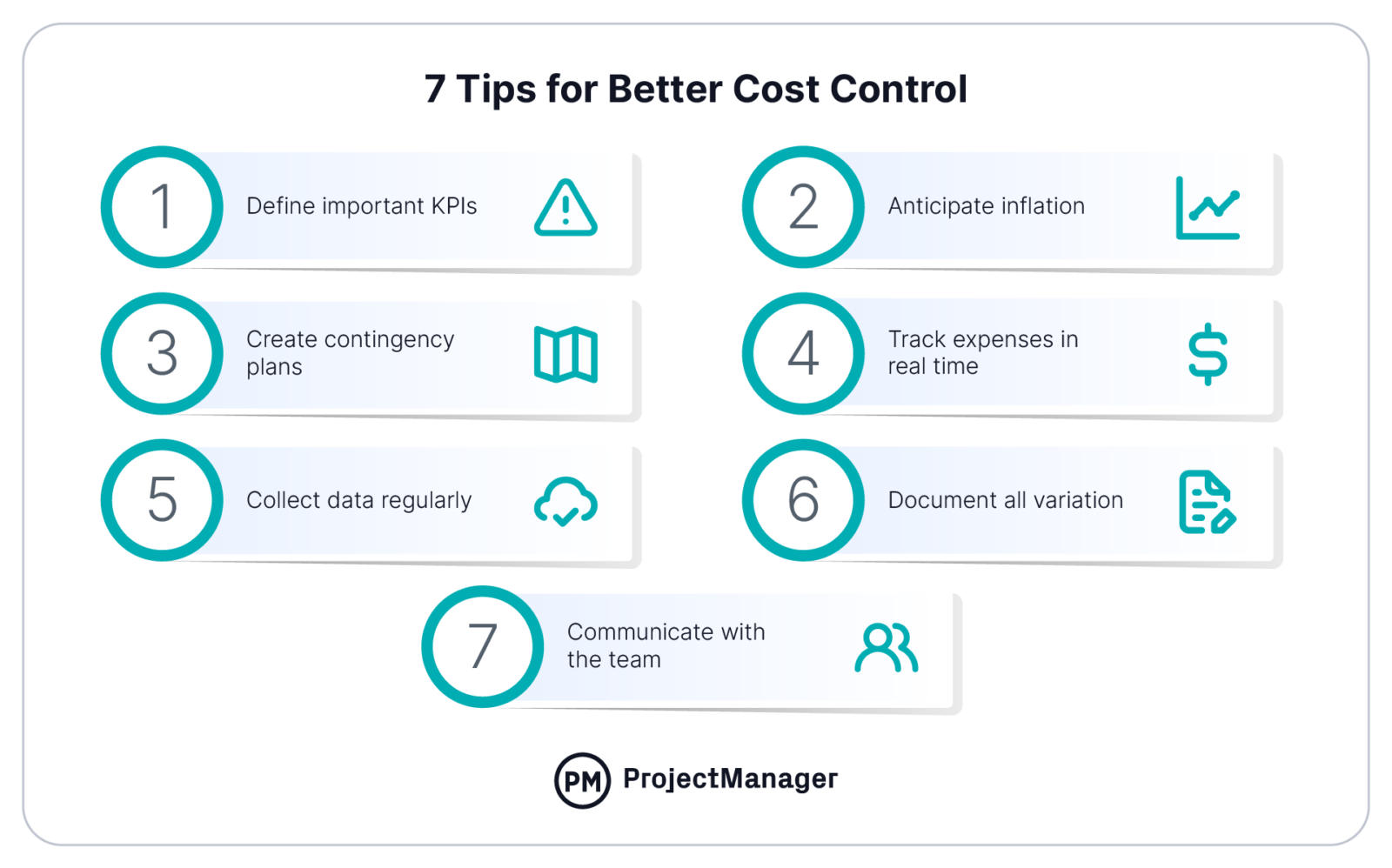
When executing these tasks is a long process, the data may have already changed and you can’t document every variation. Instead, use automated solutions that allow you to see all the information you need at once and make the necessary adjustments and reports.
How ProjectManager Helps With Cost Control
ProjectManager is a cloud-based project management solution that allows you to manage every aspect of your project from anywhere you get work done. Cost control requires current data and fast reporting to make the most accurate estimates. When you cannot access and update this information on the go, the cost control process is stalled.
Resource Management
Our resource management software allows you to track exactly how resources are being used, then allows you to create reports and spot exactly where these resources could be used more efficiently in order to decrease expenses.
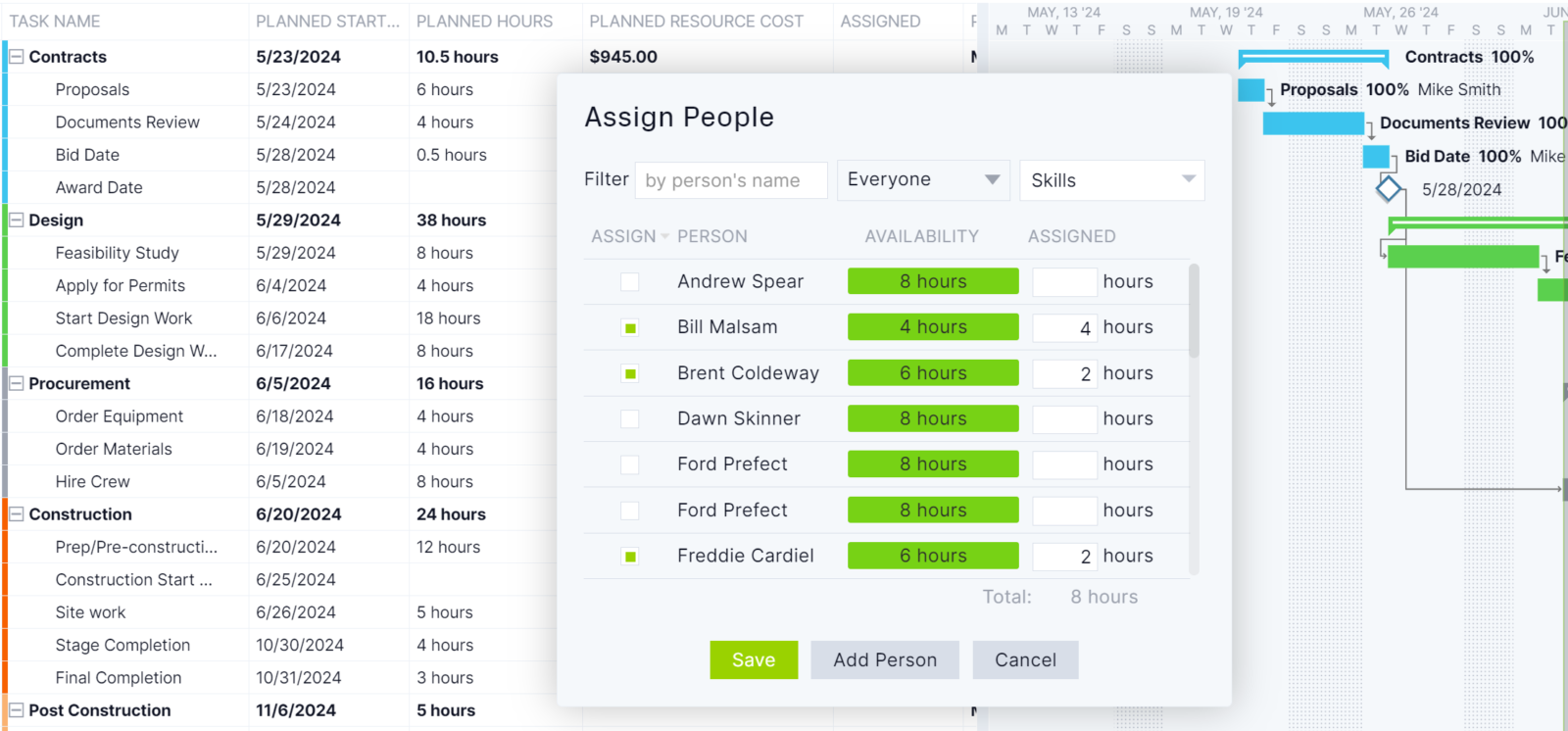
Real-Time Cost Tracking
ProjectManager gives you the power to view all the information you need on one real-time dashboard that reflects any project changes. This means spotting variations before they negatively impact your budget.
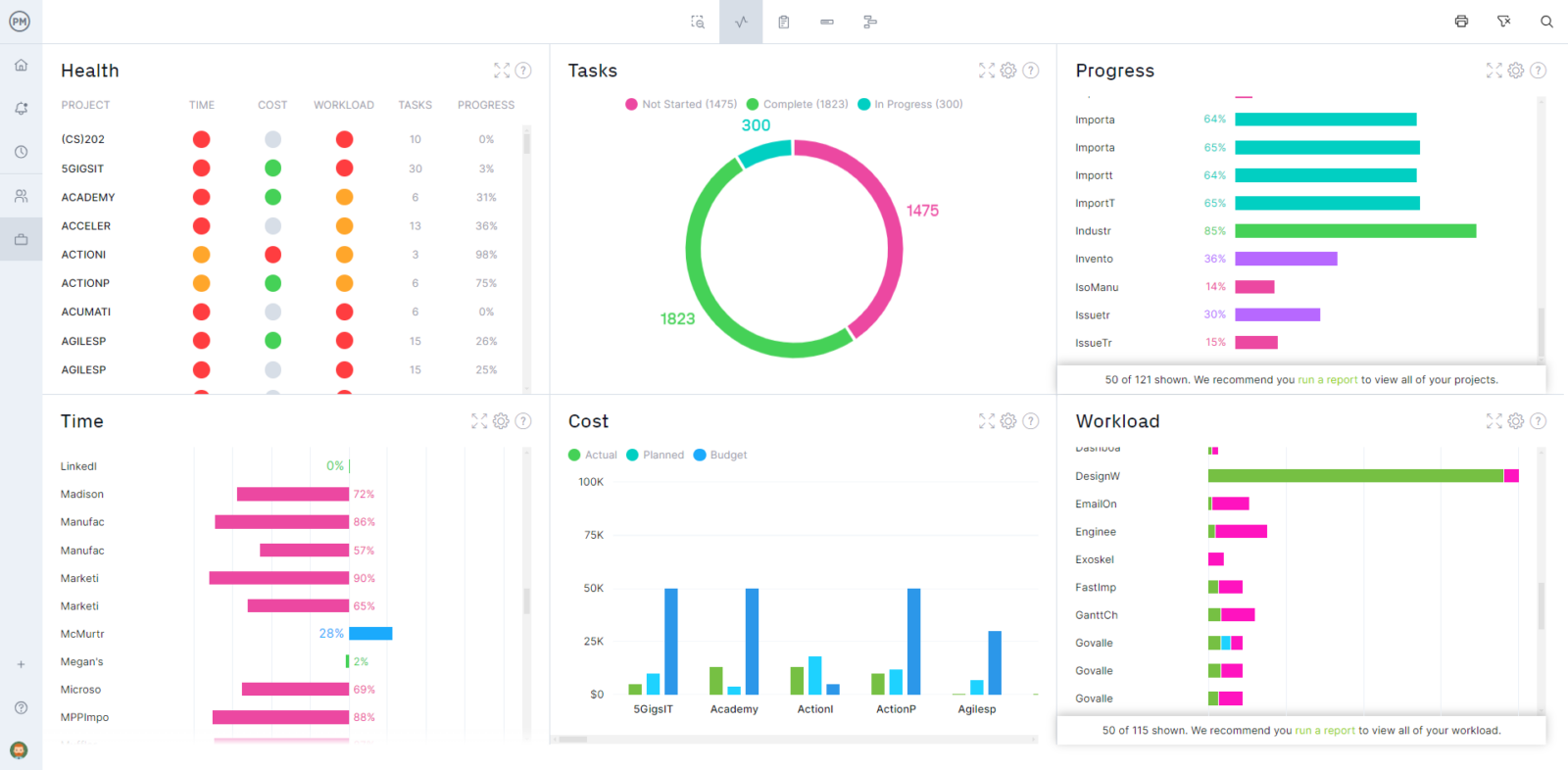
Cost and expense control is a data-driven process that requires robust project management software to digest and distribute the information. ProjectManager is a cloud-based project management software with tools, such as a real-time dashboard, that can collect, filter and share your results in scannable graphs and charts. Try it today with this free 30-day trial.

